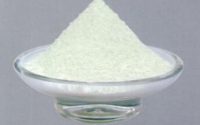Catalytic Mastery: Molybdenum’s Role in Chemical Reactions
Introduction
Molybdenum is renowned for its diverse applications. It also extends its influence beyond material strength and durability. Mo plays a crucial role as a catalyst in numerous industrial processes.
This article navigates the realm of molybdenum’s catalytic prowess. Hope that we can shed light on its significance, applications, and the underlying mechanisms that make it a catalyst of choice across various chemical reactions.

Understanding Molybdenum
Molybdenum is an essential transition metal with remarkable properties and invaluable uses across diverse industries.
With a melting point surpassing 2,600 degrees Celsius, molybdenum exhibits exceptional durability under high-temperature conditions, making it a critical component in the production of high-strength alloys. Its remarkable strength, coupled with impressive corrosion resistance, finds extensive use in aerospace, construction, and industrial applications. Furthermore, molybdenum’s catalytic prowess plays a pivotal role in various chemical processes, serving as a catalyst in petroleum refining, chemical synthesis, and environmental applications, enhancing efficiency, and enabling crucial reactions.
Related reading: Application Of Molybdenum Metal And Its Alloys
Diversity of Molybdenum’s Catalytic Power:
1. Petroleum Refining:
Mo-based catalysts feature prominently in the petroleum industry, facilitating crucial refining processes. These catalysts aid in removing sulfur compounds from crude oil, so they enhance their quality and reduce environmental pollutants in refined products.
2. Chemical Synthesis:
Molybdenum compounds act as catalysts in chemical synthesis. So, they help promote reactions in diverse industrial applications. They enable the production of plastics, polymers, and other essential chemicals vital to various sectors.
3. Catalytic Converters:
In automotive applications, molybdenum-based catalysts feature within catalytic converters. These catalysts facilitate the conversion of harmful gases emitted by vehicles, such as nitrogen oxides, carbon monoxide, and hydrocarbons, into less harmful compounds. In this way, they contribute to cleaner exhaust emissions.
Mechanisms and Catalyst Design:
1. Redox Reactions:
Molybdenum catalysts often function in redox reactions, facilitating electron transfer between reactants to promote chemical transformations. Their ability to transition between multiple oxidation states makes them effective catalysts in various oxidation and reduction processes.
2. Surface Chemistry:
The effectiveness of molybdenum as a catalyst relies on its surface properties. Active sites on the catalyst’s surface enable interactions with reactant molecules. Thus, Mo initiates and facilitates chemical reactions by lowering activation energies.
3. Selectivity and Stability:
Molybdenum catalysts exhibit high selectivity, influencing the specificity of reactions to yield desired products. Their stability under reaction conditions contributes to prolonged catalyst lifetimes, ensuring sustained efficiency in industrial processes.
Innovations and Future Applications:
1. Environmental Impact:
Ongoing research aims to enhance molybdenum catalysts for improved environmental impact. Efforts focus on optimizing catalyst compositions and exploring novel structures to enhance efficiency and reduce the use of rare or expensive materials.
2. Renewable Energy:
Molybdenum catalysts show promise in renewable energy applications. Research explores their potential in facilitating chemical reactions pivotal to energy storage and conversion systems, contributing to advancements in clean energy technologies.
Conclusion
Molybdenum’s catalytic prowess stands as a testament to its multifaceted utility beyond traditional material applications. Its role as a catalyst in chemical reactions across industries signifies its indispensable contribution to driving efficiency, sustainability, and technological progress in various industrial sectors. As research continues to evolve, the future holds promising advancements in harnessing molybdenum’s catalytic potential for transformative innovations.
Advanced Refractory Metals (ARM) stands out as a premier provider of molybdenum products, renowned for our competitive pricing and swift lead times across all materials. Our expertise extends to crafting custom materials precisely tailored to your specifications or drawings. Whether you seek standard offerings or bespoke solutions, we excel in delivering high-quality molybdenum products with exceptional value and efficiency. Please send us an inquiry if you are interested.
Reference:
[1] Catalysis. (2023, December 15). In Wikipedia. https://en.wikipedia.org/wiki/Catalysis
Related Posts

Common Types of Molybdenum Wires and Their Uses

Related Chemical Reactions of Molybdenum

